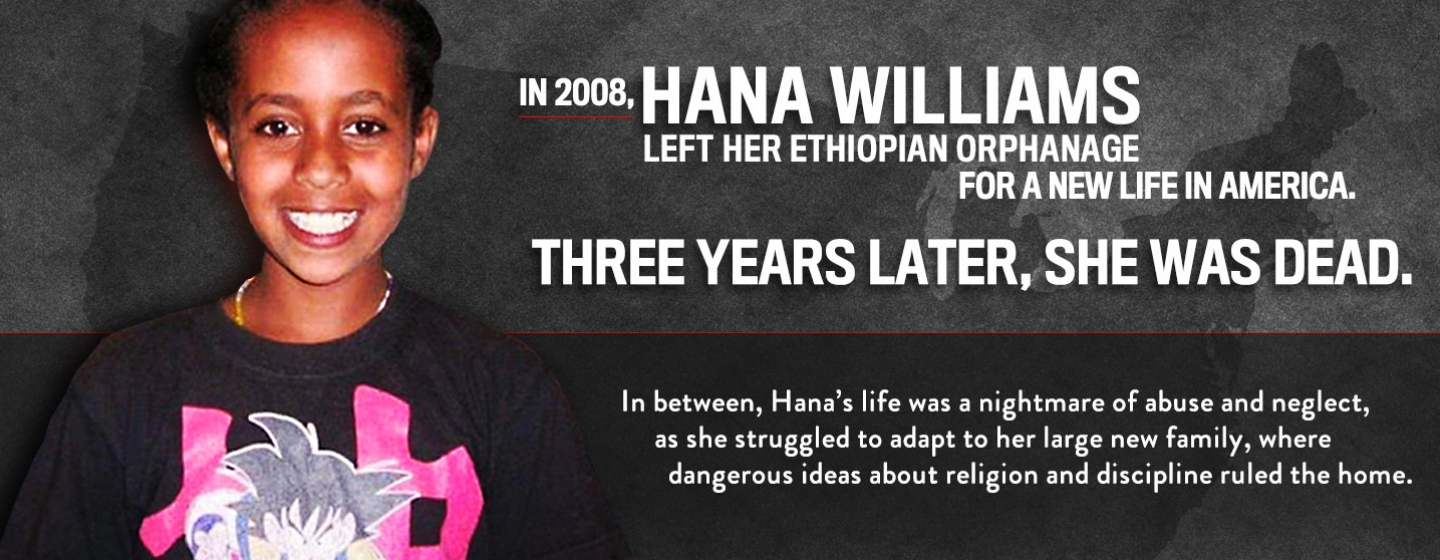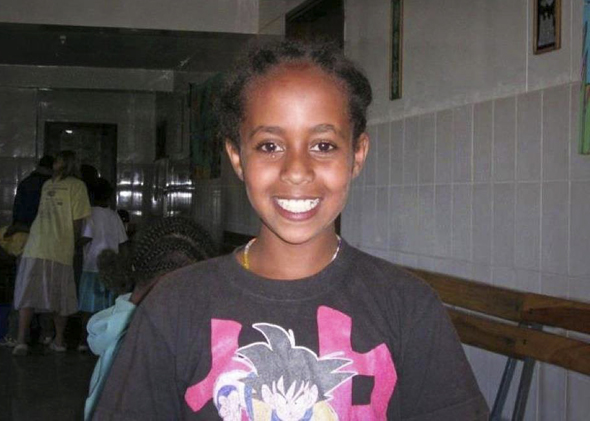On the night of May 11, 2011, sometime around midnight, 13-year-old Hana Williams fell face-forward in her parents’ backyard. Adopted from Ethiopia three years before, Hana was naked and severely underweight. Her head had recently been shaved, and her body bore the scars of repeated beatings with a plastic plumbing hose. Inside the house, her adoptive mother, 42-year-old Carri Williams, and a number of Hana’s eight siblings had been peering out the window for the past few hours, watching as Hana staggered and thrashed around, removed her clothing in what is known as hypothermic paradoxical undressing and fell repeatedly, hitting her head. According to Hana’s brother Immanuel, a deaf 10-year-old also adopted from Ethiopia, the family appeared to be laughing at her.
When one of Carri’s biological daughters reported that Hana was lying facedown, Carri came outside. Upset by Hana’s immodest nakedness, Carri fetched a bedsheet and covered her before asking two teenage sons to carry her in. She called her husband, Larry, who was on his way home from a late shift at Boeing, then finally dialed 911, telling the operator, “I think my daughter just killed herself. … She’s really rebellious.”
From court testimony, pretrial motions, and a detective’s affidavit, here is what we know about what led up to that night: Hana had been outside since the midafternoon, wearing cutoff sweatpants and a short-sleeved shirt in the rainy, mid-40s drizzle of spring in Sedro-Woolley, Wash.—a small town just 40 miles south of the Canadian border. Carri had originally sent Hana outside that day as a punishment, ordering her to do jumping jacks to stay warm. She walked Hana to an outhouse reserved for her use and watched her fall several times, but went back inside to avoid seeing what she thought was attention-seeking behavior. As the hours wore on, Hana refused to come back in when Carri called. Carri put out dry clothes and sent two of her biological sons to hit Hana on her bottom with a plastic switch for disobeying. But Hana had begun to remove her clothing, and Carri, who believed in strict modesty, called the boys back in.
As the operator walked her through mouth-to-mouth resuscitation, an even-voiced Carri explained that Hana’s mouth was full of mud, her eyes dilated, “like she’s in a dark room.” Her voice grew annoyed as she described Hana’s nudity, and how she’d been “passive-aggressive,” causing “so much stress!”
Hana was pronounced dead at the hospital, the cause hypothermia compounded by malnutrition and gastritis. The following day, when Child Protective Services tried to check on the other children, Larry Williams refused to let them in. When police followed up, a deputy noted that the family acted as though Hana’s death was “an everyday occurrence.” Twelve days later, detectives and CPS conducted interviews with the children, but their answers seemed rote and rehearsed, all repeating that Hana was rebellious and refused to mind Carri; one child said he thought Hana was possessed by demons. According to investigators, Immanuel said that “people like [Hana] got spankings for lying and go into the fires of hell,” just before Larry abruptly ended the interview.
Two months later, in mid-July, CPS received an anonymous tip from someone claiming that Carri didn’t like her adopted children and that Immanuel was starting to be treated like Hana had been. CPS launched a formal investigation, and all eight remaining children went into state care. In late September, Larry and Carri were arrested and charged with Hana’s death.
When Hana died, she became one of at least dozens of adoptees alleged to have been killed at their adoptive parents' hands in the past 20 years, and part of a far larger group of children who become estranged from their adoptive families—frequently, as it turns out, large families with fundamentalist beliefs about child rearing. Just within the Seattle area, and just among Ethiopian adoptees who came from the same orphanage and adoption agency as Hana, there has been an unreported crisis of "forever families" that fail. These are adoptions that, in an absence of any real oversight and in environments of harsh discipline, began with good intentions but went profoundly wrong.
On July 22, 2013, I watched as more than 160 potential jurors from around Skagit County filed into the auxiliary courtroom in Mount Vernon, Wash. As preliminary questioning would reveal, many were familiar with the case. Certainly it had received ample coverage, including a 2011 New York Times feature and local TV news stories on the ghoulish fight when Hana’s body was exhumed last January, in an attempt to verify her age for one of the charges the couple faced—the age-dependent crime of homicide by abuse, which applies only to victims under 16. (According to adoption records, Hana was 13 at the time of her death, but the Williamses' attorneys argued in court, unsuccessfully, that she was much older.)
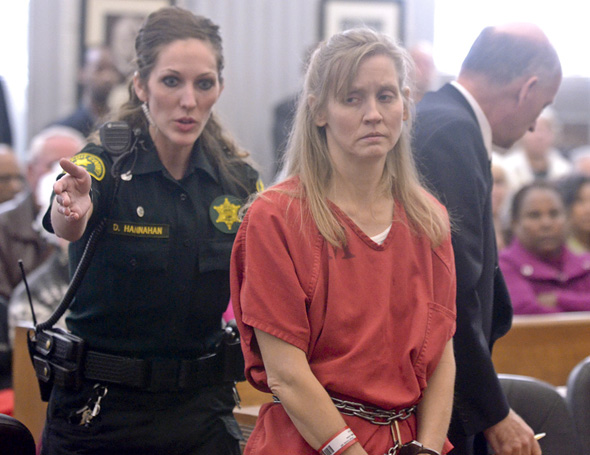
Photo by Frank Varga/Skagit Valley Herald
At the front of the room, with two public defenders, sat Carri, a frail blonde wearing a long skirt, thick white tights and ’90s-style curled bangs, fanning herself compulsively whenever she started to cry. A local TV anchor would later describe her as “arguably the most despised woman in Skagit County.” On the other side of the table, with his own pair of public defenders, was Larry, a 49-year-old former millwright with Nicolas Cage’s long, unhappy face, who’d grown up a missionary’s kid in Jamaica to parents who would marry and divorce each other twice. For nearly two years, a no-contact order had separated Carri and Larry from each other and their children. After Larry sent the kids in foster care an assortment of religious texts that the state suspected were coded messages—Bibles with certain verses highlighted; versions of the Apostle Paul’s letter to Timothy, about deliverance from the mouth of the lion—he was placed in state custody and had awaited trial in jail.
The Williamses’ lifestyle of devout, fundamentalist Christianity would become part of the unfolding trial. Isolated on a 5.6-acre lot set back from the road within a gated community, the Williamses prohibited most TV and Internet access, homeschooled their children, and, according to a report by their adoption agency, only socialized with one or two families beyond their own relatives. According to family acquaintances who later spoke to the police, the Williamses had grown increasingly fundamentalist over the years. Larry had taken to giving sermons in the backyard. Carri, who’d married at 19, went from wearing pants to just skirts or dresses, and didn’t believe that women should wear swimsuits or vote.
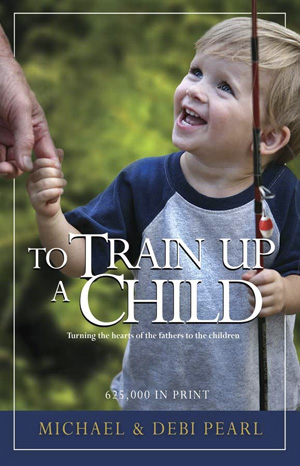
As investigators searched the house—so orderly it didn’t look like eight children lived there, wrote Detective Theresa Luvera in her warrant affidavit—they found a fundamentalist Christian child-rearing book called To Train Up A Child, written by Michael and Debi Pearl, which advises raising children to obey without question by starting to spank them when they're just a few months old. The book has been implicated in the beating deaths of two other adoptees—an American boy in North Carolina and a Liberian girl in California; the prosecuting attorney in the latter case, Michael Ramsey, called it “truly an evil book.”
In court documents, a social worker wrote that the Williamses had “diligently applied [the book’s] concept to all of their children, who told CPS investigators that they didn’t rebel because they were ‘trained’ and because their adopted siblings weren't ‘trained’ at a young age they were rebellious.” But the book was just the beginning.
According to court testimony, court documents, and pretrial motions, Hana’s life was a series of daily and escalating punishments. She had been forced to sleep alone in a barn more than 80 feet from the house; then in a locked, dark shower room; and finally, in a locked 4-by-2-foot closet, where she spent much of the last six months of her life, perhaps confined for as long as 24 hours as her parents piped in Bible sermons and religious music. (Carri would testify that the longest Hana spent in the closet was 10 hours.) After the Williamses accused Hana, who was a carrier of hepatitis B, of smearing menstrual blood on the bathroom door, Hana was also made to use an outdoor port-a-potty behind the barn that the family only serviced once or twice in the entire year she was forced to use it. She showered in the front yard under a garden hose propped up with sticks, in view of the family. Sometimes the family wouldn’t speak to her for as long as two days at a time; if she argued with Carri about the clothes she picked out, she was made to wear nothing but a towel, and sometimes she had to go barefoot. Hana’s braided hair, of which she was proud, was shorn off three times, once for cutting the grass too short. She and Immanuel were both fed different meals than the biological children—cold leftovers topped with frozen vegetables, or sandwiches deliberately soaked with water. Most often, they had to eat outside, away from the family, even in rain or snow. They weren’t allowed to participate in birthdays or Christmas. And they were spanked with a variety of instruments, including belts, a long, flexible glue stick, and a piece of thin, plastic plumbing tubing that Carri kept in her bra. The misbehavior they were punished for included getting homework wrong, not standing in the right place, and sneaking food. The biological children were sometimes spanked too, but not like the adoptees.
Friends and neighbors noticed that Hana was excluded: trailing behind the family if they went out for a neighborhood walk, or lingering at the edge of the driveway while the other children played. No one liked Hana, her siblings told investigators, but that didn’t matter, because Hana was “always in the closet”; they rarely even heard her because Hana had stopped crying when spanked. At the time Hana died, Detective Luvera wrote in her affidavit, she hadn’t fully participated in family meals or homeschooling for a year.
To a local knitting group she sometimes attended, Carri complained that Hana was rebellious and wouldn’t obey. According to an account in the detective’s affidavit, she seemed upset that Hana had begun menstruating almost immediately after arriving in the United States and she said she “had expected to adopt a little girl, not a half-grown woman.” When members suggested she reach out to the adoption agency, Carri said, “I don’t wish her on anyone.” The family made preliminary efforts to formally change Hana’s age. If they could kick Hana out when she turned 18, Carri told the knitters, she was confident they could train Immanuel to obey. When one knitter asked how Hana would survive, Carri replied, “It won’t be my problem.”
Things weren’t much better for Immanuel. When Immanuel began wetting the bed after a few months in the house, he says, the Williamses accused him of doing so on purpose and forced him to take immediate cold showers outside under the hose. He testified in court that he too was sent to sleep in the bathroom. Immanuel was also punished if he didn’t feel the vibrations of one of the Williamses stomping their feet on the floor to get his attention. Often, he was switched on the soles of his feet, and sometimes Carri ran the plastic switch up and down his face—something she said was a joke. Once, during a family celebration, Larry hit him hard on the top of his head, causing bleeding that ran down his face. Afterward he was put outside and the rest of the family was told not to sign with him. At church, a deaf parishioner, Brian Kruick, sometimes tried to talk to Immanuel alone, to see how the boy was doing, but every time he came close, Larry or Carri would take the boy away.
In foster care, after Immanuel and the other children were removed from the Williams home, a therapist and deaf-children’s specialist, Julia Petersen, said Immanuel had been afraid to talk about the Williamses, fearing he’d be punished. His language skills were delayed and his emotional state confused. He compulsively apologized for minor mistakes and asked his foster mother why she didn’t hurt him. He had nightmares about returning to the Williams family, and felt certain he would have been the next one to die in the home. He once signed to Petersen, “I can’t escape and I have to stay.” She diagnosed him with post-traumatic stress disorder.
On July 29, Immanuel came to court to testify in the first of numerous half-day sessions where he would tell his story. It was a slow process, involving three sign language interpreters, that left the courtroom silent for long stretches of time, punctuated by sounds of crying—from Carri at the defense table, but also observers in the gallery moved by the sight of the small boy who looked more like 8 than 12 and his continuing confusion about what he’d seen. At one point Immanuel testified that he wasn’t sure where Hana had gone. “I don’t know,” he signed, his hands pausing in midair. “She disappeared. I think maybe she’s dead.”
Around the same time the Williamses were building their family, in the mid- and late 2000s, homeschooling conservative Christian parents of large families had begun adopting in significant numbers across the country, seeing adoption as a form of rescue that demonstrated their faith. Laurie Ann Hinman, a homeschooling Christian adoptive mother of eight who had attended a women’s Bible study with Carri, believes Carri was inspired to adopt by a fundamentalist women’s ministry, Above Rubies, which ran women’s retreats they’d both attended and which had sparked an earlier surge of evangelical adoptions from Liberia (many of which also failed).
In 2008 the Williamses decided to adopt. They looked to a nearby agency, Adoption Advocates International, a secular organization that was started by Merrily Ripley, a mother of 20, 17 of whom were adopted. AAI alerted them to a deaf Ethiopian child in need of a family. It seemed like a good match on paper. Before getting married, Carri had studied American Sign Language, with plans of becoming a sign language interpreter. She’d become a mother to seven instead, and wanted more children after pregnancy complications had left her unable to bear more herself. Carri and Larry completed a home study with AAI, apparently omitting information about the family’s disciplinary beliefs on a pre-adoption form admitted as court evidence. (Gay Knutson, director of social services for AAI, wouldn’t comment specifically on the Williams case, but says prospective adoptive families who spank would not be allowed to adopt from AAI—though some families have lied about their parenting practices to the agency.)
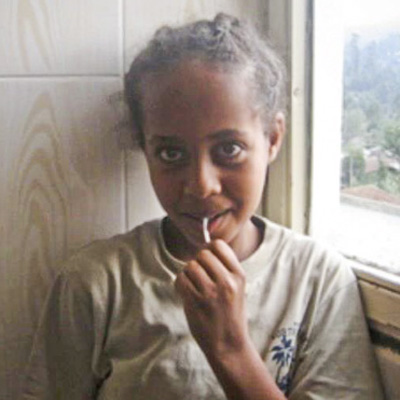
Photo courtesy Remberance of Hana Williams/Facebook
After they’d decided to adopt Immanuel, the couple saw a 60-second video of a tearful but healthy young Hana and agreed to take her too. “Our heart went out to her,” Larry would testify. Both children came from an AAI-affiliated orphanage in Ethiopia called Kidane Mehret, and both were reportedly abandoned. In a process that the Ethiopian government no longer permits, the children flew to the United States with an escort, without ever meeting the Williamses. Early post-adoption reports from the first year—three brief reports from an AAI social worker who visited in the first six months and one from the Williamses themselves at the one-year mark—painted a bucolic, if undetailed picture: Immanuel learning to sign with his new siblings; Hana reading Little House on the Prairie. Medical charts show Hana growing from a slightly underweight 77 pounds when she first arrived to a plump 105 pounds six months later.
But after June 2009, there is no evidence of further doctors’ visits, and no more post-adoption reports, as the Williamses stopped sending in the updates that they’d agreed to provide to AAI, but which weren’t required by law. (Once an adoption is finalized, adoption agencies no longer have the legal right to compel families to provide reports, explains AAI’s Knutson. She says these reports can be unreliable anyway, as parents self-report or may obscure their parenting practices in front of social workers.) There seem to have been no more weigh-ins until Hana’s body arrived at the coroner in 2011. She was between 76 and 80 pounds at the time of her death, lighter than 97 percent of girls her age. In images from the autopsy, Hana’s ribs are visible, her clavicles sharp, her gaunt chest as flat as a boy’s.
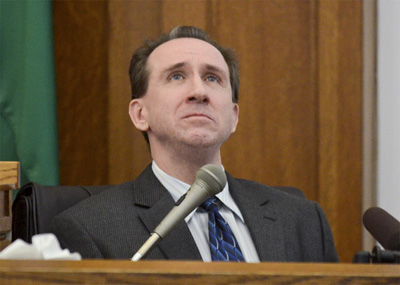
Photo by Scott Terrell/Skagit Valley Herald
When Carri and Larry Williams took the stand during their defense, they blamed each other: Carri for presiding over the abuse on a daily basis while Larry was away at work, unaware of how bad things had become, and Larry as the head of a patriarchal home, where his wife was just his delegate. Although there had been no mention during the trial of the adoptees’ potential psychiatric issues, Larry’s defense team asserted in closing that the family had been utterly unprepared for the challenges of adopting two children with mental health problems on top of the seven they had.
On Sept. 9, seven weeks after the trial started—the longest trial in county history that the prosecutor could remember—Carri and Larry were found guilty on almost all the charges brought against them: first-degree assault of Immanuel, manslaughter of Hana, and for Carri, homicide by abuse. On Oct. 29, they were sentenced—Larry to almost 28 years and Carri to almost 37.
On a Facebook page for Hana, there were eruptions of joy: “Thanks to god.” “We got-em, baby.” Some wanted Michael and Debi Pearl to be tried next. Among the 5,000 members of the page are many Ethiopians and adoptive parents—groups that in Seattle are tightly knit and that had sent daily observers to the courthouse to “bear witness for Hana.”
“We look at our own children, and think, how could that go so horribly wrong?” said adoptive parent Maureen McCauley Evans, who attended the trial almost daily, writing comprehensive blog updates for supporters unable to attend. But she also had an idea how it happened. More than an adoptive parent, McCauley Evans is also the former executive director of the Joint Council on International Children’s Services, one of the top adoption advocacy organizations in the country, and had worked for two adoption agencies in the Maryland area. From this experience, she feels Hana’s case symbolizes some of the worst problems in adoption policy today: that families are only required by the Hague Convention on Adoption, an international treaty ratified by the United States, to have 10 hours of preparatory training before adopting, all of which can be done online; that once adoptions are finalized, families have no legal responsibility to report on their children’s well-being; and that a family was able to simultaneously adopt two older, traumatized, special needs children without having traveled to Ethiopia. That the Williamses took no steps to understand Hana and Immanuel’s background and believed that striking and withholding food were legitimate forms of discipline for adoptees—who may have gone hungry or been abused in the past—just made the situation that much worse.
Throughout the trial, heartsick adoptive parents horrified by abuse condemned the Williamses’ home as “the opposite of adoption” and Carri Williams as a sociopath or evil.
“As horrible and sad as Hanna’s [sic] death is, neither AAI or the orphanage is to blame,” argued Gail Gorfe, AAI’s former Ethiopia adoption coordinator, on Facebook. “The blame is with the family, specifically with Carri, which everyone here agrees upon.” (AAI had reason to be defensive; its Ethiopia adoptions were temporarily suspended in 2012 over concerns about abuse.)
But to McCauley Evans, that response was too tidy. It missed the larger, sadder picture she glimpsed when the Williamses’ biological children testified and Carri beamed at them with a face full of love. To her, those moments hinted at the more frightening reality that child abuse isn’t limited to families that are unremittingly cruel or pathologically unattached—just as failed adoptions aren’t the anomaly that agencies claim they are. In fact, as I soon learned, Hana’s and Immanuel’s adoptions weren’t the only ones that had gone badly wrong in this small corner of Washington state.
When I first met Abebe Hehn in early August, 30 minutes south of the Mount Vernon courthouse, he was talking to a pastor about suicide. We were in a Starbucks in a section of town so dominated by halfway houses and homeless shelters—including the one Abebe lived in—that the bathroom had a combination lock on the door.
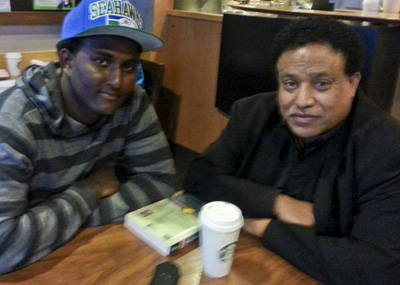
Photo by author
We’d tried to meet the night before, but Berhanu Seyoum, an Ethiopian Lutheran pastor who introduced us, and who often drives up from Seattle to visit Abebe, hadn’t been able to find him, since Abebe spends as much time as possible away from the shelter. At the time, I was struck that I’d never heard someone discuss suicide in such a straightforward manner as did Abebe. A lumbering but shy 22-year-old who, despite his large frame, managed to disappear into his sweatshirt and jeans, Abebe spoke with the flatness of serious depression, and even Seyoum—a cleric, trained for such moments—struggled to voice optimism, calling the young man’s life ruined. Abebe bobbed his head.
An Ethiopian adoptee estranged from the family that had adopted him, Abebe is also already an ex-con who, when I spoke with him, could only find irregular work waving flags for construction sites, processing crabmeat, or wearing a sandwich board on the sidewalk outside a hair salon. He’s a homeless young man living at a shelter among drug addicts and mental patients, and he is a registered sex offender, with more than a year left on parole. He’s living in such a complicated web of problems that Pastor Seyoum thinks the only way out is for Abebe to return to Ethiopia and start again.
When Abebe was 5, his biological parents died from “some kind of disease they had in Ethiopia,” leaving him and two sisters on their own. Over the next few years, Abebe, his younger sister Belaynesh, whom I also spoke with, and his older sister Mimi, moved through as many as six orphanages in Ethiopia, waiting for a family that could adopt them all.
In 2002, when Abebe was about 10, Belaynesh 8 and Mimi about 13—adoptees’ ages are frequently incorrect, due to inadequate record-keeping and sometimes deliberate misrepresentation to make children appear younger and thereby “more adoptable”—a family from Edmonds, Wash., adopted two of their orphanage friends through AAI, then returned for them.
Julia Hehn, a public school teacher, and Rich Hehn, a librarian, were Methodist churchgoers who had adopted many times before. Julia, whom the kids call Julie, was herself adopted as a child, and also worked with AAI, volunteering in at least one of the three orphanages that AAI partners with in Ethiopia—including the home that Hana and Immanuel came from. She helped set up a school and sometimes escorted children to their adoptive families—among them, she claimed in an online forum, Immanuel Williams.
When the three siblings came, there were already about a dozen children in the home. There were others who’d grown and left—three biological children and some earlier U.S. adoptees. Some children were adopted directly from the orphanage; others, like Marta Wondimagegn (who now uses her biological father’s name), joined the family after their first adoptive placements didn’t work out. Belaynesh had to tally the family’s many members on a sheet of paper, and thinks that all told there were 32 children, including 24 Ethiopian adoptees. Marta thinks there were 31. Another adopted sibling, Amelework, wasn’t sure how many there were because she’d never met a number of her siblings. In 2005, when the Seattle Times published a laudatory profile of the family, there were 22 children; in 2009, when local TV station King News covered “super mom” Julie Hehn, the children totaled 29. To all four of the adoptees I spoke with, it was like being in an orphanage again.
How the family was able to adopt so many children is unclear, but AAI says there are no policy limits on how large an adoptive family can be. In the community, says Marta, now 22 years old, many revered the Hehns: “In Edmonds, she was almost like a Mother Teresa figure.”
While many extremely large adoptive families resemble the classic fundamentalist homeschooling lifestyle of the Williamses, the Hehns were different. Their children went to public school, and both parents worked—Julie in more than one job, as she taught full-time and also helped at AAI and at a family restaurant. But there seem to have been similarities in their approach to adoption. On King News, Julie lamented she couldn’t save all the children she met, and her pastor told newspapers that the Hehns’ many adoptions represented “the very heart of Christian faith.”
Things were more complicated at home. After school the kids say they came back to a household full of chores: looking after younger children, making meals, changing diapers, and cleaning house. Abebe, Marta, and Amelework say they weren’t punished much physically, but that Belaynesh, who was mouthy and sometimes broke things, got hit a lot. According to the four adoptees, she was pulled by her hair, hit with a sandal, banged against the wall, and sometimes sat upon by her parents while they covered her mouth—perhaps in an effort to subdue her or perhaps so the neighbors wouldn’t hear—until she was gasping for air. In a family that eclipsed some orphanages in scale, there was little time for help with homework or individual attention for the children who weren’t young or sick. One sibling says Belaynesh struggled for attention in a situation where, as Amelework put it, there wasn’t “enough love to go around.” Abebe says he heard his sister crying day and night.
“There was a lot of hitting in the house, especially for me, because for her I was the baddest one. I would tell her how I feel or argue something or I would stand up for the kids,” says Belaynesh, now a slight, trembling 20-year-old who wore skinny jeans and a sweatshirt on the day I met her. She says that neighbors called CPS on the family once when she’d been locked in her room for two days and broke a window to get out; but when CPS came, she says, the parents said Belaynesh was out of control. (Washington CPS says they’re barred from acknowledging an incident unless it results in a fatality or near fatality.)
In 2009, when Abebe was 17, something happened between him and another child living in the house—then a roughly 14-year-old girl whom the Hehns describe in court documents as functioning at a much younger age, and who, according to Abebe and Belaynesh, was then the only white adoptee at home. Abebe claims that on one occasion the girl came into his room, proposing sex, but that he was afraid and they’d fooled around instead. According to court records, the girl told her parents that Abebe had been touching her inappropriately on multiple occasions over the past year and that he’d initiated sex.
The police were called, and Abebe, feeling scared, says he confessed to fooling around to his mother. The Hehns then drove him halfway across the state to a family friend in Yakima—a single woman who would end up taking in four of the family’s children for months at a time when there were problems at home. Shortly thereafter, according to court documents, Julie went on a trip to Ethiopia for the summer while Abebe waited in Yakima; a friend’s mother recalls her family caring for his bleeding feet after he attempted to walk back home to Edmonds. After he turned 18, his family pressed charges against him. Abebe says that on the advice of a public defender, he pleaded guilty to third-degree rape of a child, in court proceedings where he required an Amharic translator as he’d never become fluent in English and may struggle with a learning disability. As a junior in high school, he was sentenced to 14 months in prison.
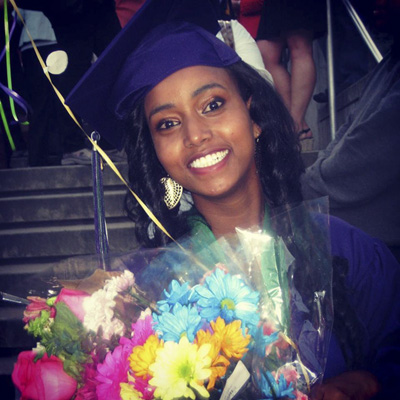
Photo courtesy Belaynesh Hehn
Belaynesh left next. After years of fighting with the Hehns, Belaynesh one day ran into Abebe on a city bus while she was going school shopping with her siblings and while he was awaiting trial. Though they were all supposed to ignore Abebe, Belaynesh hugged him. Soon after, the Hehns took her to Yakima too.
It was the start of a series of homes Belaynesh would live in over the next many months, she told me, during which she bounced from Yakima to Edmonds and back, twice to a teen homeless shelter in Everett called the Cocoon House, and finally to the domestic violence shelter where Mimi lived for two years, and where Belaynesh stayed until the two got an apartment with Mimi’s two daughters last year. During Belaynesh’s years in the family, she was arrested or brought to juvenile court 11 times that she recalls, including for an alleged assault of the family friend in Yakima that landed Belaynesh briefly in juvenile detention—where she requested to stay for an additional month, according to Sharon Harris, an official at her school, rather than return to the house. That year, she was enrolled in four separate schools, leaving her education so disrupted that when Belaynesh later met Pastor Seyoum—showing up at his church requesting prayers for a sick sibling—she still didn’t know basic math in the 11th grade.
Harris, the assistant principal at Eisenhower High School in Yakima, met Belaynesh when she was enrolled in the school by the Hehns’ family friend, and, observing the girl’s apparent discomfort, invited her to talk anytime. Harris, who is African-American, tried to help, first seeking to involve Belaynesh in groups like the Black Students’ Union or her church, but she says the Hehns wouldn’t let Belaynesh join (arguing in one case that she wasn’t black, but Ethiopian).
“She was telling me things that weren’t sounding right,” says Harris, who recalled that Belaynesh would begin to tremble when she mentioned Julie’s name. “My role was to keep her comfortable and keep her spirits up while she was in a place she didn't know how long she was going to be there.” To Harris, Belaynesh seemed “just a little submissive thing, a 110-pound girl,” who was as mouthy as any teen, but not the violent misfit she’d been painted as by her mother. Harris made a list of professional contacts she reached out to in an attempt to get help for Belaynesh, including the Department of Social and Health Services, its office of the children’s ombudsman, congressional representatives, Ethiopian consular officials, social workers, the Urban League of Metropolitan Seattle, and the NAACP—even Seattle’s local King News TV network, which had profiled the Hehns. But, she says, she couldn’t get anyone to investigate.
Other kids left the family abruptly as well. Amelework, now 21, says she was kicked out after she stuck up for her siblings, criticizing the Hehns for unfairly singling some kids out for punishment. Marta says she was kicked out about 11 p.m. on the night of her high school graduation, after she refused to join a family celebration. All four have struggled to retrieve their vital documents from the Hehns. Julie and Rich Hehn did not respond to multiple, detailed emails, Facebook messages, or phone calls requesting comment. To be clear: Neither of them has been charged with any crime.
When Abebe was released from prison at 19, he was sent to a halfway house with other sex offenders, where he lived for 15 months until he couldn’t afford the rent on the ex-con jobs he could find. He is banned from libraries, movie theaters, parks, playgrounds, malls, and schools—anywhere minors might be. (Clementina Katiraie, the mother of one of Abebe’s friends from childhood soccer, says he couldn’t stay with her family because they have a minor daughter.) If he wants to visit the town where he grew up, he needs permission from his parole officer. And if he doesn’t go home to the Everett Gospel Mission at night, as he’s tempted to do, he worries he could wind up back in jail. For a while, he says, his family wouldn’t turn over his Social Security card, and they still refuse to give him his birth certificate or passport. He’d kill himself, he says blankly, if not for his sisters and nieces.
Earlier this month, as the Williams trial drew to a close, Marta told me she called CPS to ask that an investigation be launched into the conditions for her siblings remaining in the home. “I said, ‘We don’t need another Hana where you want to help when someone dies. We need it before it gets to that point.’ ” She says the woman she spoke to told her that unless the children were not being fed, there was nothing CPS could do. (That “doesn't sound like something our operators would say,” CPS spokeswoman Chris Case told me.)
“I wish there’s a way to stop Julie and Rich from adopting,” Abebe told me. Belaynesh is less optimistic: “This thing is going to keep going, nonstop.”
Abebe was one of 10 young adult Ethiopians I spoke with who were adopted in the Seattle area—including three of his adopted siblings—through the same agency as Hana and Immanuel. They grew up in the same set of AAI-affiliated orphanages—sometimes moving among multiple institutions—and all of their adoptions later failed, with most leaving their adoptive homes between 16 and 18, either running away or being thrown out. There are many more like them.
All of the adoptees I interviewed were adopted to large families, ranging from six to dozens of children, and most were, to some degree, isolated from the outside world, whether through homeschooling or parents who kept rigid control over their social interactions. Most, though not all, of the parents were devoutly religious and practiced varying degrees of harsh parenting that sometimes included physical abuse. It was, in many ways, an interconnected community of parents who had all adopted through AAI, and who, according to the adoptees, would go on to share parenting and discipline tips and visit each other. (The Williamses, even more isolated, were not part of this network.) Several of the families were linked by their adopted children’s biological siblings, who were divided among the group. And in all the families, there were adoptions that ended badly. More than one told me that Hana Williams’ story, before her death, resembled a sibling’s or their own.
They’re among a surprising number of adopted children across the country who have faced serious abuse, neglect, or indifference in the families that take them in, some of whom have died in their parents’ care (among them, the 20 Russian adoptees thought to have been killed by parental abuse or neglect and cited as justification for Russia’s December ban on U.S. adoptions). That abuse is part of a spectrum of failed adoptions, from the underground “rehoming” network—an informal way for adoptive parents to offload adoptees, covered in a recent Reuters investigation—to anecdotal reports of many international adoptees being placed in foster care or returned to their countries of origin, to the quieter epidemic of adoptees who leave home in their teenage years, running away or kicked out, unprepared for adult life in America. The Adoption Policy and Reform Collaborative, an adult adoptee organization, has spoken to the numerous stories of adoptees landing in youth homeless shelters near or upon their 18th birthdays. We don’t have enough data on adoptee outcomes, because neither the federal government nor the states tracks what happens to children after they’re adopted: how they fare at home or whether they become part of the 10 to 25 percent of adoptions that are “dissolved” or “disrupted,” with adoptions of older children more likely to fail. In this information vacuum, many adoptees can simply disappear—sometimes literally, like Erica Parsons, a domestic adoptee in a North Carolina homeschooling family recently reported to have been missing for the past two years.
Historically, failed adoptions were thought to come from countries where children were either institutionalized for long periods of time (like Russia or Romania) or from post-conflict zones where adoptees may have experienced serious trauma (like Liberia or Sierra Leone). However, the pattern is now emerging with adoptees from countries that don’t share those histories, including China and Ethiopia, two of the top “sending countries” for international adoption to the United States. In other words, problems that adoptive parents have frequently attributed solely to adoptees, for being too damaged to adjust to family life, sometimes have a cause in the parents as well, who may embark on challenging adoptions with abundant zeal but no training or preparation, and a system that provides few real checks. Adoptions that go as catastrophically wrong as Hana’s are due to more than just one bad book, but a toxic combination of unprepared and overwhelmed families, inappropriately harsh parenting that exacerbates traumatized children’s behavior, and an oversight system that too often fails to consider either. And the children’s side of the story is rarely told.
Another part of the picture is the makeup of some adoptive families. As many Christians in recent years have been urged by their pastors to care for orphans, an evangelical adoption culture has grown rapidly, with thousands of Christians attending annual adoption conferences and denominations like the Southern Baptist Convention encouraging members to adopt. It should go without saying that most devoutly religious adoptive parents, or conservative Christian parents generally, are not abusive. However, children adopted by some religious subcommunities—isolated homeschoolers with large families, deeply conservative beliefs about discipline and obedience, and a practice of adopting multiple unrelated children at once—may find themselves in families unprepared to give them the care they need.
Rachel Coleman, a Ph.D. candidate at Indiana University Bloomington and a homeschooling graduate, co-created the website Homeschooling’s Invisible Children, which tracks cases of extreme child abuse or death in the homeschooling community. Of the 125 cases the site has collected so far, 54—or 43 percent—are adoptees. Much of that she attributes to parenting styles among some fundamentalist homeschoolers that focus on breaking a child’s will to raise perfectly obedient children.
“Adoptive parents coming from this point of view are looking at the child almost as an enemy to conquer. The idea is that there is a payoff: If you can win the battle, you save the child’s soul,” says Coleman. In such a setup, families may be reluctant to admit failure or ask for help, and everything from everyday disobedience to serious problems that need psychological treatment may be instead viewed as “sin issues” to be addressed with religion.
Laurie Ann Hinman, who’d attended Bible study with Carri Williams, and who is saddened that the Williams case may unfairly stigmatize other Christian homeschooling families, believes that something similar probably happened in the Williams home: that the family had adopted with good intentions but had “an unrealistic view of adoption,” leaving them unprepared for the problems that can come. The disciplinary tactics many such families use with biological children with fewer issues, she says, may not work with adoptees. Added to that, she thinks, because of the family’s beliefs, they may have been particularly hesitant to seek help, as conservative Christian families who use corporal punishment are often concerned that CPS intervention will cost them their families.
“Any family that tries to bring in adopted children, it’s like trying to put a square peg in a round hole. A lot of people make the assumption that if I just push hard enough, that peg will change into the right shape and will fit into our family,” says Hinman. Sometimes that works, she says, but other times, parents respond to failure by just pushing harder and harder. “I think there was a fear, probably starting way back at the beginning of it, where they crossed over the line and knew they crossed [it] and thought … if we ask for help now, then they’ll take all of our kids.”
Gay Knutson of AAI says the question of “mega families” adopting is a fraught one that’s been intensely debated. She says the Ethiopian government discouraged the practice about 2008 or 2009, although large families are still adopting. The complicating factor, she says, is that large families are often the only ones taking in older children—who are already statistically more likely to face a disrupted adoption—or multiple siblings or children with special needs. And, she points out, some small families are dysfunctional as well.
“I wish I had a crystal ball and could say OK, if we place these 100 kids, these 85 are going to thrive and do well and these 15 aren’t. I wish I could tell which of those 15 might be better off staying in Ethiopia,” she says. “That’s the choice: You take a chance or you leave everybody there. That’s the moral dilemma.”
The young adult adoptees I met weren’t in that 85 percent. Meg was adopted with her sister Maria about 1999, when they were about 10 and 13, to a family that would have six Ethiopian children in total. The girls say there was frequent punishment for everyone, but the youngest two, twins, fared the worst: spanked with belts, sent to bed without food, and forced to sleep on the bare bathroom floor.
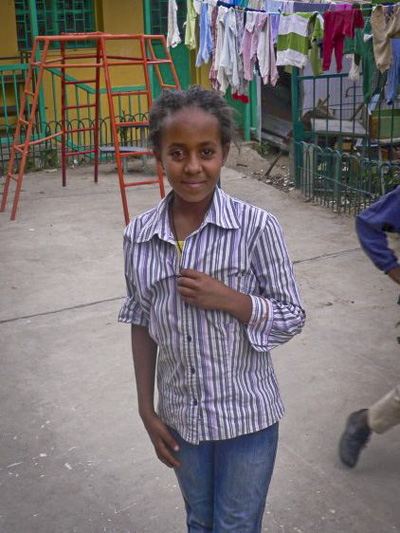
Photo courtesy Remembrance of Hana Williams
“When I read about Hana, I thought, oh my God, this could have happened to my little sister,” says Meg.
Although the parents didn’t strike Meg as particularly religious—Maria says they became more so as time went on—they seemed to fetishize obedience. After a neighbor called CPS, the parents sent Meg and her sister to a “lockdown” troubled girls’ home in Florida, the Victory Christian Academy (later renamed Lighthouse of NW Florida, it has since closed) where the girls say other residents were hit and shut in small rooms with Bible recordings playing on loop. Another adopted brother, says Meg, was simply sent away, outside any legal process, to live with a Mennonite family.
Neither of Meg’s parents responded to online messages requesting comment. Neither have been criminally charged with abuse.
Meg’s biological brother James went to a Seventh-day Adventist family on a small farm near Sedro-Woolley that would ultimately have a total of 11 children. At first, he says, the parents had been encouraged to adopt by their church, but as the family took in more and more children from broken adoptions, the congregation grew skeptical. So the parents “left the church and kept adopting,” says James.
James was adopted when he was about 8, with his close orphanage friend Matt, then 11. Matt, whose biological sister Marta and their brother were adopted to another family then ultimately “rehomed” with the Hehns, says he always felt a level of survivor’s guilt about the other siblings they’d left back in Ethiopia, and says he and James once got in trouble for requesting the family adopt them instead of other kids. In many ways, the boys had a typical small-town childhood, with soccer tournaments and freedom to roam on the farm. But they fought with the family’s youngest biological daughter and were forbidden from speaking Amharic, and Matt says he had trouble in school. Within a year after he arrived, he says, the family threatened to send him to another family and once, he says, woke him up for a nighttime ride where his mother threatened to return him to Ethiopia.
When he turned 12, problems grew worse and included what James describes as degrading and abusive physical punishment of Matt. There were sessions of sitting in place for as long as five hours, heavy chores, forced cold showers, and spankings with wooden spoons or belts. Matt says he was once duct-taped to his bed and was sometimes locked in his room or forcibly held on the floor by both parents, one sitting astride him while the other poked him forcefully in the chest—something he says the family called “Chinese torture” that may have been a form of “holding therapy,” a widely discredited treatment for attachment disorders that has gained popularity among some adoptive parents. During one such session, Matt says he blacked out and bit his mother; another time he leaped from his bedroom window and his parents had him hospitalized, claiming he’d attempted suicide. After he came home, Matt says he stayed locked in his room most of the time, eating little and excluded from the family, as his brothers and sisters weren’t allowed to talk to him. He fell into some bad habits in high school, had run-ins with the police over underage drinking and taking a friend’s car and sometimes “ran away” into the acres of land the family owned. Once, his father told him he wished he could kill him, and Matt ran away again. He says that soon thereafter, a judge removed him from the house for his own safety, transferring his legal guardianship to a friend’s mother. Yet another child, Tomas, left the family after their father asked him to reimburse the cost of his adoption.
“I don’t see why they were adopting so many kids when they couldn’t give us what we needed,” said Matt, now 23. “My parents thought we were going to be normal American kids just like that, but we had so many other needs that they didn’t meet, except with discipline.”
The boys’ father could not be located, and their mother declined to respond on the record. As with all of the other families in this piece other than the Williamses, they have not been charged with any crime.
After he was taken out of the family, Matt says he called the founder of AAI, Merrily Ripley, to explain what was happening at home. “I said, ‘Is there anything you can do for my brothers and sisters?’ and explained their situation,” he says. “She pretty much told me that they have no control and they have nothing to do with us after we’re adopted to the States.”
While Gay Knutson says she never heard of Matt calling, and finds his story surprising since AAI tries to be responsive, “There’s a certain amount of truth to that,” she says. “The children are legally adopted … just like your and my biological children. AAI has no more standing once children are adopted; we have no power, as it were.”
Mulu, a 25-year-old certified nursing assistant, was yet another Ethiopian adoptee sent to a Seventh-day Adventist family in the Seattle area, one that would grow to have 15 children—adopting so many, Mulu says, “because that’s what God told them to do.” After Hana’s death, the Ethiopian Community Center in Seattle hosted a meeting about adoption, and a number of adoptees came. Mulu was among the first to speak, describing how, with so many children, she felt her own opportunities were cut off, that she was isolated from the outside world, and that there was no one to call when her fights with her mother grew out of control. When social workers came by for post-placement check-ins, she recalls being interviewed in her parents’ presence, so she couldn’t explain what was going on. She thinks, like all the other adoptees I spoke to, that the problems begin with the family’s size. When she heard about Hana Williams, her first question was “How many kids were there?”
Most of the 10 adult adoptees I spoke with said there should be limits on how many kids a family can adopt, since their own families had felt like “American orphanages.” Most wistfully compared their outcomes with those of orphanage friends who were adopted to smaller homes that functioned more like families, and whom they now see finishing medical school or living “the American dream.” Had their situations been reversed, they think they could have had the same.
Quietly, members of Seattle’s Ethiopian community agree. “Every bad case we hear about, there are 15 kids, 17 kids, 20 kids, 30 kids,” said Metti Mulugeta, a member of the Ethiopian Community Center who works closely with adoptive families. Most, she says, are wonderful, but in some homes—often large families, often driven by a mentality of wanting to save as many children as possible—things have gone wrong. And with so many adoptees in each family, there can be a disproportionate amount of harm.
“It seems like of the 25 of us from [the orphanage], I think not even eight have really good families that are happy,” Meg said. “The rest of us are making a family of our own, with each other. The emotion, the love, just wasn’t there.”
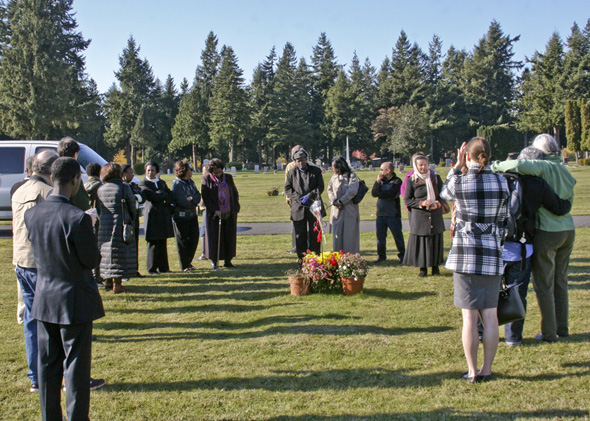
Photo courtesy Seattle Ethiopian Community Center
Hanna Petros, a retired social worker, volunteers in the Ethiopian Community Center's ad hoc effort to serve as a safety net for adoptive families before things go wrong. She sees the Williams trial and the mounting number of failed adoptions as interconnected crises, with adoptees' welfare left to chance and no systemic protection if their family life turns bad. Petros was called on to help with Abebe and the other estranged Hehn adoptees, but on top of her existing pro bono caseload, found their complicated situations beyond her capacity—“a can of worms that I don’t know how to handle”—and declined to take them on. The Community Center, composed mostly of first-generation immigrants, can’t perform what is essentially a government agency's job. The problems emerging in the wake of the Ethiopian adoption boom, laments Petros, are “beyond what the Ethiopian community can do.”
For now, that leaves individuals like Pastor Seyoum, alone and overwhelmed. “I don’t want to say I’m the only one,” says Seyoum, “but I end up being the only one running around saying, ‘Hey guys, this is going to happen, these kids are going to lose their future.’ ” A proud Ethiopian, he says it’s in his culture “to have broad shoulders; we can take everything.” But he doesn’t understand what’s happened here. “There’s no one who’s going to help these kids. They have just fallen between the cracks.”
Washington’s Department of Social and Health Services and its office of the children’s ombudsman published a report last September on “Severe Abuse of Adopted Children.” The report studied 15 abuse cases, involving more than 30 children, brought to the state’s attention in 2010 and 2011.
Although the research was started before Hana’s death, her story became the focal point, and illuminated common forms of abuse that other children suffered: being locked in rooms or forced to stay outside, having food or access to toilets withheld, and social isolation, often including being withdrawn from school, that obscured the abuse. At least nine of the 26 school-age children were reportedly homeschooled, several because their mother “did not want the teachers feeling sorry for them because they are ‘all sad’ and looked like they are starved at home.” Abuse tended to spiral, as parents exaggerated children’s misbehavior, punishments increased in frequency and severity, and isolated children lost the possibility of reaching outside help.
“You’d think these would have been the safest environments,” said report author Patrick Dowd of the ombudsman’s office, considering the families had all been vetted, but the fact that abuse rates in adoptive homes were commensurate with the rates in unscreened biological families told him that there were serious problems in how adoptive families are chosen and trained.
The report led to a bill, HB 1675, proposed in Washington’s state legislature this March, that would have made small steps toward protecting adoptees with moderate reforms to the home study process and instituting procedures for tracking failed adoptions. It was not a radical bill, and some advocates have called for stronger reforms. But nonetheless, when Democratic Rep. Mary Helen Roberts, a member of the House Judiciary Committee, proposed a provision asking prospective adoptive parents about their plan for discipline, it met resistance. She says one conservative colleague charged that the bill would invite religious discrimination. Roberts reluctantly added an amendment ensuring no such discrimination, and the bill passed the House, but when it got to the Senate, it died in committee—in part, Roberts was told, because it had “gotten a little controversial.”
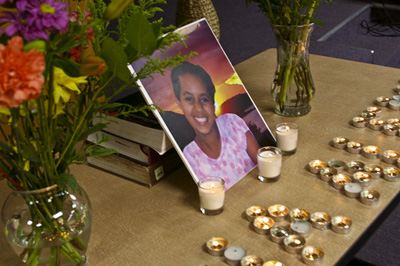
Photo courtesy Seattle Ethiopian Community Center
Still, the Williams verdict has renewed calls for adoption reform in Washington—which to date seems to be the only state studying adoptee abuse. There is also talk of a federal bill to enhance post-adoption services for families and require better data collection on failed adoptions, and some adoption agencies, including the country’s largest, Bethany Christian Services, have called for action against rehoming. And a new website, Betaseb, is attempting to provide a place for older Ethiopian adoptees to talk with each other privately and learn about their rights.
After Hana’s death, AAI instituted some changes. Adoptive families now have to sign a policy detailing abusive disciplinary tactics they will not use, and their post-placement reporting procedure now extends for a year, rather than six months, and involves interviewing adoptees separately from their parents. Families also must now contractually agree that if they don’t file post-placement reports, AAI can contact CPS or law enforcement to check that everything is OK.
Immanuel is now living with a deaf, African-American foster mother. His signing ability has improved dramatically and, according to court testimony from a parishioner who has known him since he lived with the Williamses, seems happier than he’s ever been.
After the Williamses' sentencing, the Ethiopian community center had hoped to install a headstone for Hana where only a temporary marker had been. But in October, community members, who had spent months following the trial and years grappling with what had gone wrong, learned that they couldn’t. Two years after Hana’s death, the Williamses’ extended family suddenly ordered a headstone themselves. The birthdate on the stone, the local funeral home told me, will read 1994—three years earlier than the year listed on Hana’s death certificate. As the Williamses head into appeal, the engraving is an attempt to posthumously change Hana’s age from 13 to 16, just as the Williamses’ defense attorneys had argued in seeking to invalidate the trial’s most serious charge, to cast Hana not as a youthful victim but a troubled older teen. If only on a symbolic level, it gives the parents who abused, shunned, and ultimately killed Hana the last word on her life.
This article was reported in partnership with the Investigative Fund at the Nation Institute.
